双语 | 坛城修行:辛苦拿起,轻松放下
Mandala Practice: Toilsome Take-up for a Relieving Let-go
一切有为法,如梦幻泡影,
如露亦如电,应作如是观。
《金刚经》
All mundane dharma, as zilch,
As unreal as illusion, as a naught,
And as brief as a dew, as light,
Shall be viewed as such.
Diamond Sutra (Vajracchedika Sutra)
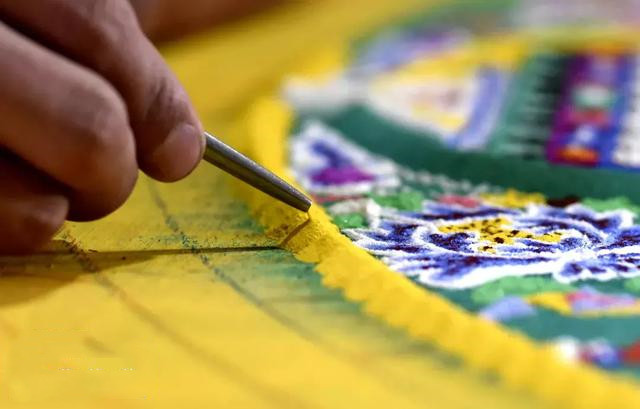
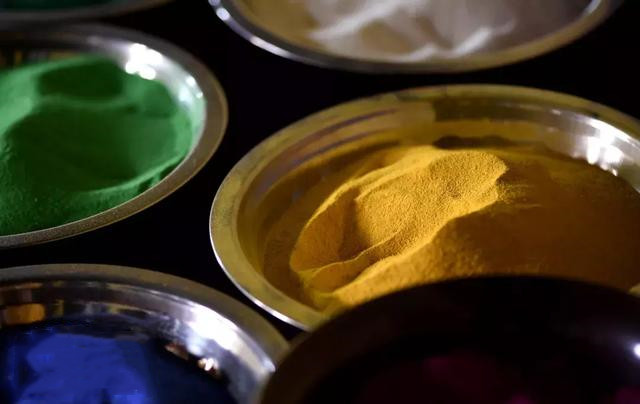
早已调配好的彩色沙粒被灌入绘制沙画坛城专用的工具——锥形金属管。僧人们席地而坐,俯身朝向木制的台座。通过手持细金属条在锥形金属管上下滑动引起的震动,彩沙被精准地滴漏在台座上,继而形成一个个精妙的图纹。
Color sands are prepared and poured into conical metal pipes – a special tool used for drawing the Mandala. Sitting on the ground and facing a wooden pedestal, the monks are now holding thin metal strips sliding up and down the conical pipes. Vibrations cause sands dripping down on the table to form delicate patterns one after another.
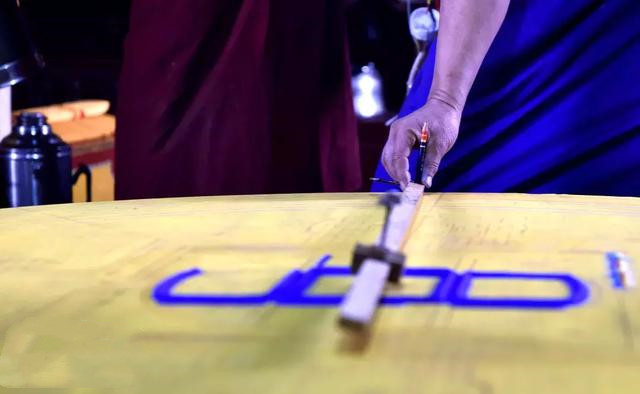
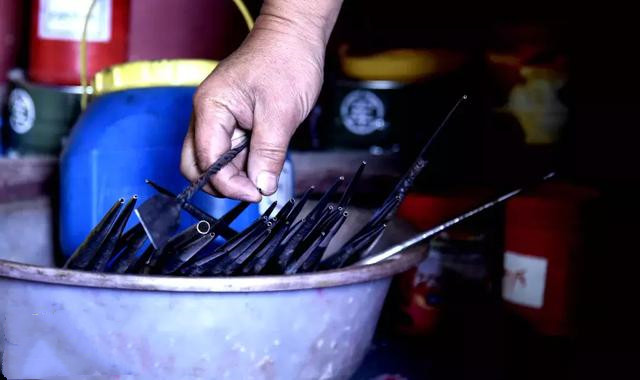
在金属条上下滑动的吱呀声中,一粒粒彩沙一点点地由中心开始,方圆相见,逐渐向外围扩散……这个用彩色沙粒堆砌出的佛国世界,也是寺庙僧人们的“别样”修行。
In the squeaking sound of metallic sliding, grains of sand start to accumulate in the center where the square (i.e. the earth) and the round (i.e. the heaven) meet, then spread to the peripheries … the Nirvana piled up by colored sand is ‘another kind of’ practice of the monks.
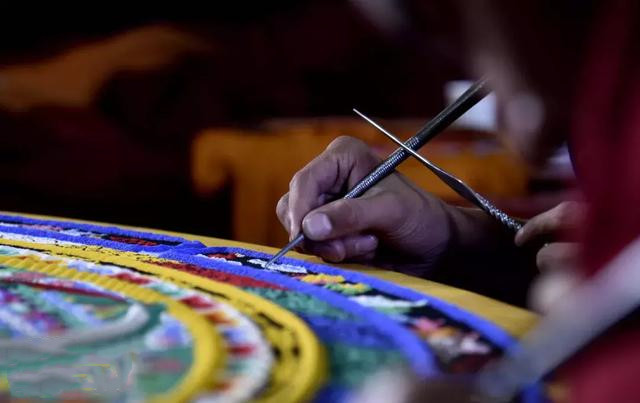
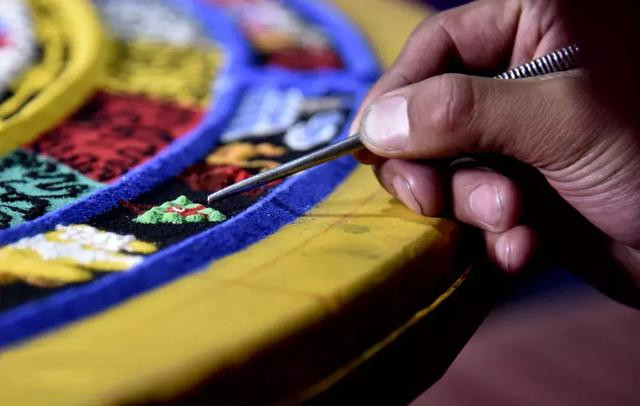
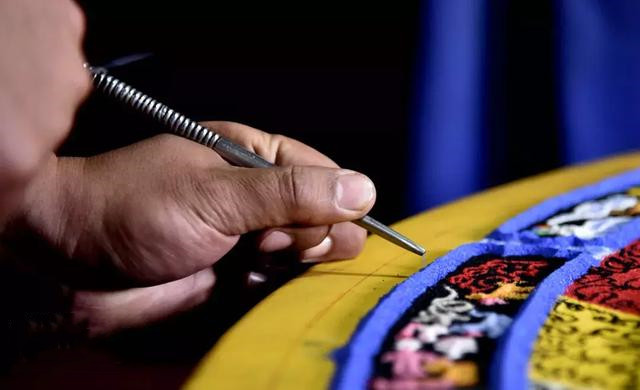
坛城源于印度佛教密宗,是藏传佛教密宗修行时供奉的对象之一。沙画坛城以七彩沙粒按严格的比例、结构、内容等堆砌而成,每一个步骤,都谨遵佛陀所传密续如法制作,不能擅自乱制,制作过程繁杂。一幅坛城沙画,需要数位僧人历时数天才能完成。
Originated in India, Mandala is one of the objects to be worshiped when practicing Tibetan Tantra. Dul-tson-kyil-khor (Tibetan word for Sand Mandala) is built up with seven-colored sand strictly pro ratio, by structures and on contents. Each step must be done by following reverently the secret rules of Tantra. While free-will making is a sacrilege, days of painstaking work by several monks are required to complete a Sand Mandala.

绘制坛城前,僧人们会根据仪轨诵经,测绘丈量坛城位置。在台座上勾勒好轮廓后,由中心开始,方圆相间,逐渐向外围扩散绘制。在绘制过程中,也需要全神贯注。沙粒极细,一点点轻微的晃动都会影响到整体。
Before drawing, the monks would do some chanting via Mandal Zhichok (a kind of Buddhism ritual) and measure the right location for Mandala. Starting from the center where the square and the round meet, the drawings are gradually extended outwards. In the course of drawing, full concentrations are needed. With super-fine sands, a slight wobble would affect its whole.
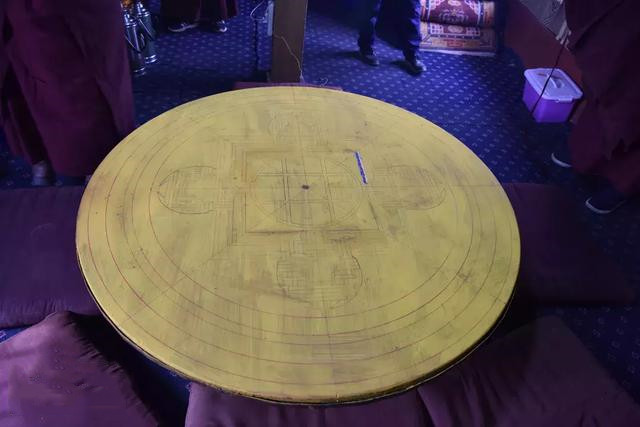
第一粒彩沙滴漏在“大威德金刚坛城”的东面。几分钟后,一道蓝色的直线纹盖住了台座上的一条直线。
The first grain dripped on the east side of the ‘Mandala of Yamāntaka’. A few minutes later, a blue sand thread covered a drawn line on the pedestal.
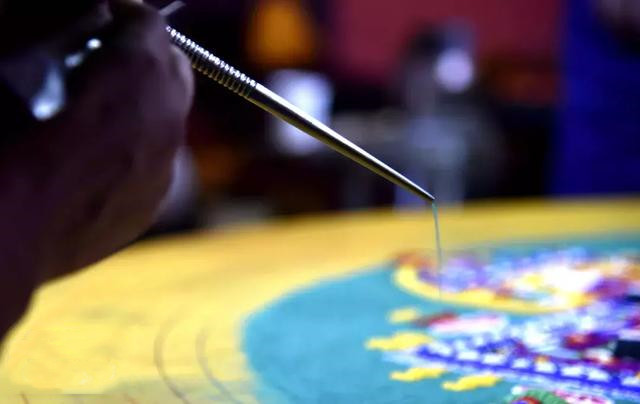
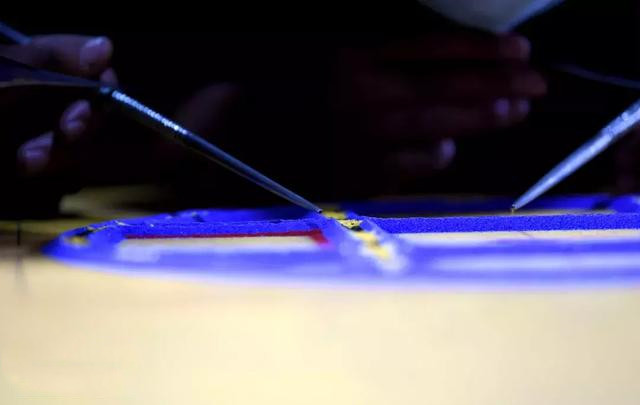
历时五天,在直径1.5米的圆形木板上,大威德金刚坛城呈现眼前。从细节到整体,闭上眼睛,世界也就展现在眼前:蓝天、白云、绿草、花朵、山峦、河流、寺院、僧人……
Lasting for five days, the Mandala of Yamāntaka finally comes into being. Close your eyes and feel the world around you with this spectacular painting on a round board 1.5 meters in diameter: blue sky, white clouds, green grasses, flowers, mountains, rivers, temples and monks ……
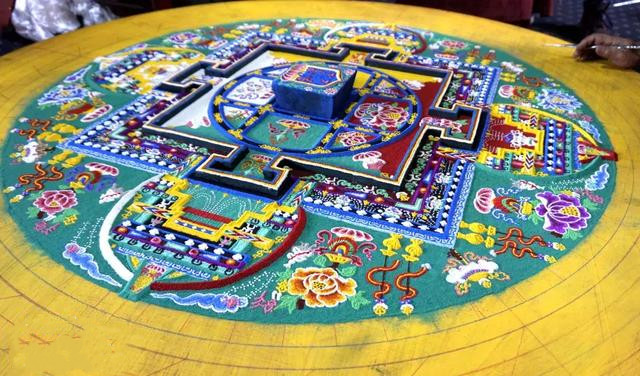
绘制完成后的坛城,被玻璃罩和帷幔保护。7天的法事活动结束后,坛城就会被放置在其上东南西北等八个方位的金刚杵推平、扫毁。
The accomplished Mandala is protected by a glass dome veiled with drapery. After a seven-day religious ceremony, this Mandala will be swept and destroyed.
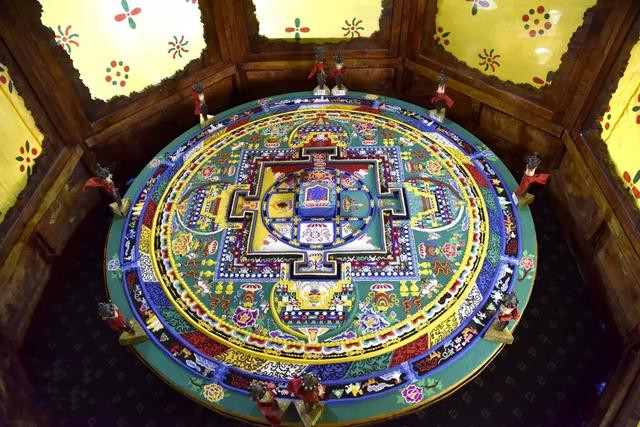
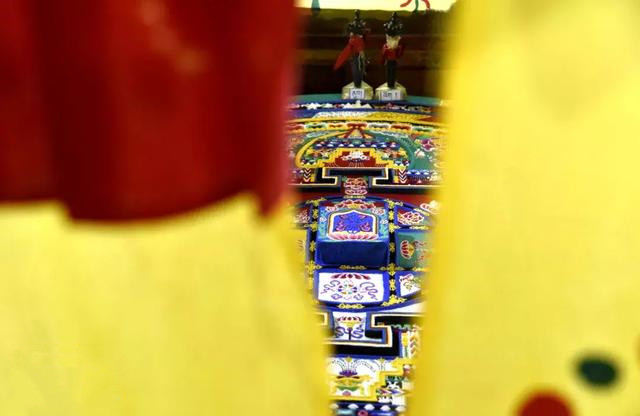
普通人可能会觉得可惜,连续几天要俯着身子是件多么辛苦的事情,还要聚精会神地把控锥形金属管和细金属条将彩沙一点点堆砌。可修行的人却觉得再平常不过,对于他们而言,绘制、供奉坛城的过程本身就是修行。
It is a pity in the eyes of the ordinary people, considering how hard it is to lean down for days on end to load bit by bit those colored sand with their conical pipes and fine metal sticks. But for practitioners, it is completely normal. For them, drawing and worshiping Dul-tson-kyil-khor itself is a practice.


辛苦的拿起,轻松的放下。
繁华纷杂的世界,也就是一捧捧细沙。
Toilsome take-up for a relieving let-go
Our world is a busy and multifarious whole, resembling a handful of fine sands.
如果您还没有关注优智家,请扫描下面的二维码:

[中文原文及图像来源:TIBET西藏旅游]













